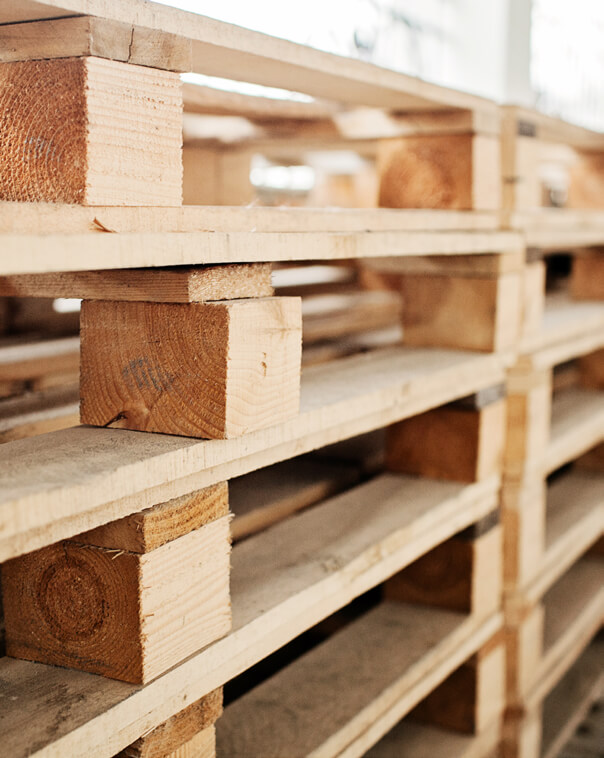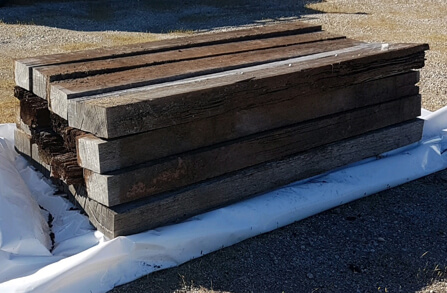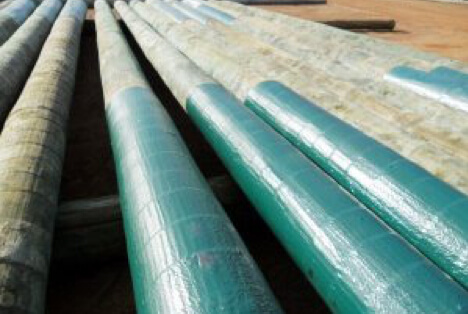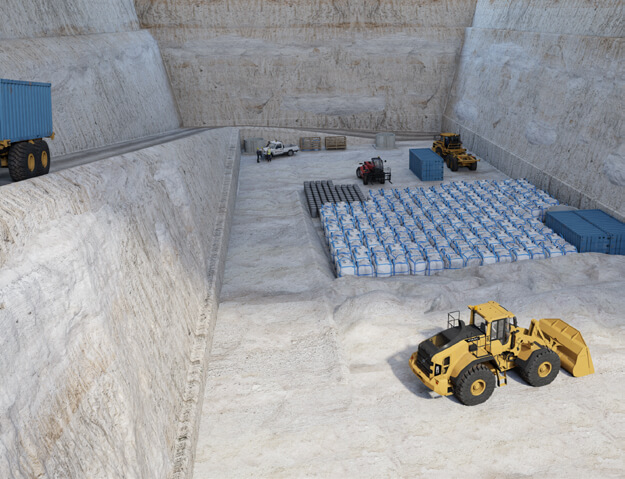PERMANENT ISOLATION OF HAZARDOUS WASTE USING GEOLOGICAL REPOSITORIES
Permanent Isolation (Disposal) of Chemical Impacted Wood
THE PROBLEM WITH HAZARDOUS CHEMICAL IMPACTED WOOD
Australian wood products have been a popular choice for the building and industrial sectors due to their low cost, availability and aesthetic finish. To increase longevity, wood products have a long history of being treated with a range of hazardous chemicals to reduce rotting and insect infestation.
Chemically treated wood has been used in a variety of applications including railway sleepers, marine piles, power poles, fence posts, vineyard supports and landscaping.
Historically, a range of hazardous chemicals have and continue to be used to treat wood to increase longevity. Types of chemicals used to treat wood have included:
- Chrome copper arsenic (CCA)
- Pigment emulsified creosote (PEC)
- Copper Azole
- Persistent Organic Pollutants e.g. Dieldrin and Aldrin
- Tributyltin
In the environment, the hazardous chemicals contained within the wood product can leach over time, creating a public health risk as well as potentially causing damage to local ecosystems and the greater environment.
Fig. 1 Chemically treated wood in pallets

Fig. 2 Hazardous chemical contaminated railway sleepers

HOW ARE HAZARDOUS CHEMICAL IMAPCTED WOOD WASTES CURRENTLY MANAGED?
Depending on the type of chemical treatment used, treated wood may be processed and re-used. Unfortunately, due to the hazardous nature of the chemicals used, significant quantities of these wastes are deemed too difficult, or too expensive to treat and so, require disposal.
Treated wood may produce hazardous and toxic fumes if burned. Care must be taken to ensure that wood treated with hazardous chemicals is not sold to the public as fire wood or for use in landscaping.
Wood treated with Creosol, CCA and POPs are generally too hazardous for disposal via landfills, due to the risk of leachate formation and groundwater contamination. Disposal options for hazardous chemical impacted wood may include:
- Reprocessing and re-use, which may involve multiple treatments
- Immobilisation and disposal in a suitable repository
EXAMPLES OF HAZARDOUS IMPACTED WOOD
- Railway sleepers
- CCA treated pine
- Decommissioned Jettys
- Winery supports
- Power poles
TYPICAL DG CLASS AND UNCODE
Hazardous chemical impacted wood may fall into multiple DG classes. Typical classes expected at Sandy Ridge include:
- Division 6.1 – Toxic substances
- Division 9 – Miscellaneous dangerous substances and articles
ALTERNATIVE WOOD CONTAMINANTS
Wood waste may also be contaminated by hazardous chemicals during its operational life. Potential contaminants include:
- PCBs
- Asbestos
- Oil and Grease
- Diesel
- Petrol
- Heavy Metals
- Pesticides
Fig. 3: Power poles are chemically treated and need to be disposed of responsibly

IMMOBILISATION AND DISPOSAL OF HAZARDOUS IMPACTED WOOD WASTES
Tellus intends to dispose of Hazardous Chemical Impacted waste at the Sandy Ridge facility in accordance with the Basel Convention Technical
Guideline: general technical guidelines on the environmentally sound management of wastes consisting of, containing or contaminated with persistent pollutants.
These guidelines outline the environmentally sound methods of managing POPs, including the use of a Specifically Engineered Landfill (SEL) for disposal. As a geological repository, the Sandy Ridge Facility exceeds the requirements of an SEL.
Tellus has worked closely with leading environmental consultant firms to determine the most environmentally sound way of disposing of hazardous chemical contaminated wood.
Wood waste can be placed and encapsulated within the Sandy Ridge near surface geological repository. Encapsulation at Sandy Ridge provides a long-term safe and environmentally sound way of isolating hazardous waste, preventing discharge of hazardous chemicals to the environment.
THE TELLUS SOLUTION
Tellus is currently developing storage, recovery, and permanent isolation infrastructure in the form of geological repository facilities supported by a “hub and spoke” logistics solution across Australia.

KEY CLIENT BENEFITS
Tellus offers simple, safe and cost-effective storage, treatment and permanent isolation (disposal) solutions for hazardous wastes. We offer one of the most technically and commercially sustainable solutions for hazardous waste disposal to our national clients.
Features and benefits include:
| Quality |
|
| Commercial and risk transfer |
|
| Functionality |
|
| Sandy Ridge availability and innovation |
|
| Regulatory approvals and licensing |
|
| Price |
|
